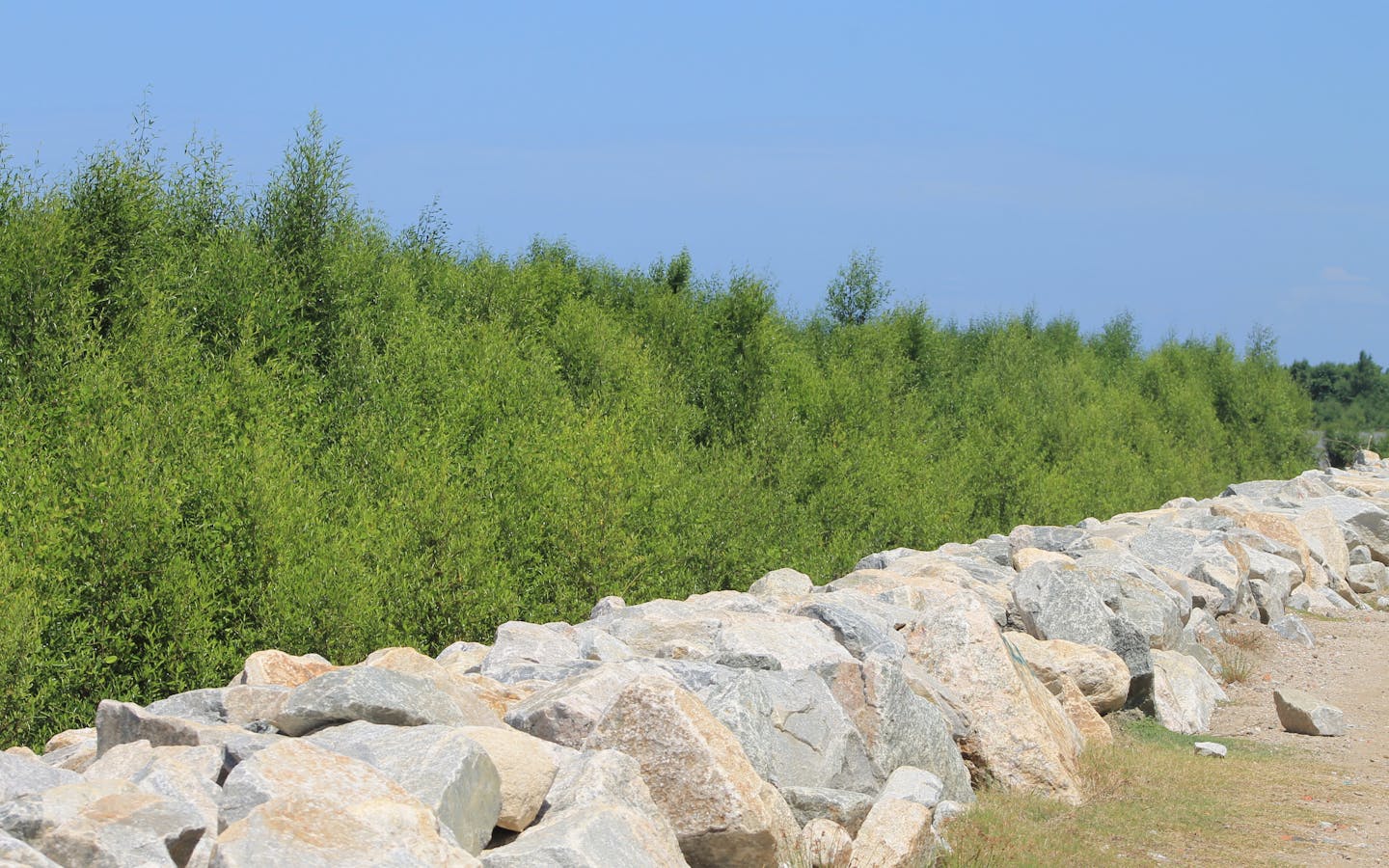Green infrastructure refers to natural systems including forests, floodplains, wetlands and soils that provide additional benefits for human well-being, such as flood protection and climate regulation.
Gray infrastructure refers to structures such as dams, seawalls, roads, pipes or water treatment plants.
Adapting to the escalating impacts of climate breakdown — particularly for coastlines facing sea-level rise and stronger storms — requires changing our infrastructure.
“Green-gray” infrastructure mixes the conservation and restoration of nature (including natural coastal buffers such as mangroves and seagrasses) with conventional approaches (such as concrete dams and seawalls).
The result? Fortifying communities against climate effects while providing fresh water, clean air, coastal protection and other natural benefits.
By the numbers
The challenge
Green infrastructure can take many forms — from big networks of protected natural areas to green roofs in cities — but all types of green infrastructure employ nature to provide natural benefits such as clean air or reliable flows of clean water.
Conventional engineering approaches have immediate benefits — concrete breakwaters reduce wave energy, for example — but can be costly to install and maintain. Moreover, they can impair the environment — for example, dams can upset the migration of fish living in channels downstream. The challenge is strategically combining the two.
Every infrastructure project is an opportunity to equally prioritize the conservation of nature and the provision of natural critical services to communities. A combined green-gray approach can be greater than either strategy applied alone.
How we work
Conservation International is combining nature-based approaches to addressing the climate crisis with technical, engineering and science-based expertise. From restoring beach sands for mangrove restoration to conserving coral reefs through marine protected areas to constructing rock breakwaters, we’re innovating the next generation of climate resilient infrastructure to benefit the vulnerable communities where we work. By partnering with everyone from farmers and fishers to global engineering firms and impact investors, we are ensuring green-gray infrastructure projects incorporate local customs and practices with pioneering science, technology and finance.
Global Green-Gray Community of Practice
The Global Green-Gray Community of Practice is a collaboration across the conservation, engineering, finance, and construction sectors to generate learning and innovation to achieve climate adaptation benefits for communities, their future generations, and biodiversity. Learn more about the Community of Practice.
Example projects:
Storm protection in the Philippines
The Philippines is one of the most vulnerable nations in the world to the effects of climate breakdown. Tropical storms are happening more frequently and with greater intensity, leading to devastating storm surges along the country’s coasts — such as Typhoon Haiyan, which killed more than 6,000 people in 2013.
Conservation International is working to minimize the damage of future storms by constructing green-gray projects, especially in the country’s most isolated and vulnerable regions. Four pilot project sites in Iloilo province combine mangrove restoration with breakwaters to improve the resilience of coastal communities. We are working with the government to implement these kinds of approaches across the country.
‘Climate-smart’ shrimp
Nearly half of all mangrove forests have been lost in the past 40 years, often to make room for shrimp farms, an industry that is expected to grow dramatically in the coming decades.
Conservation International is working with shrimp farmers, supply chain companies and governments to ensure the industry grows sustainably. In shrimp-farming regions of Indonesia and Ecuador we are working with farmers to responsibly intensify shrimp production on a portion of their lands while also restoring nearby mangrove forests.
Shrimp aquaculture production from Indonesia and Ecuador combined represent more than 20 percent of the global market. Demonstrating success in these mangrove-rich regions can influence the entire global market.
» See the full 'Climate-Smart' Shrimp fact sheet
Coastal resilience along the North Brazil Shelf
As global sea levels continue to rise, the threat of flooding along the shorelines of the North Brazil Shelf, which spans six countries including Guyana and Suriname, becomes even more pronounced.
In Guyana, where 90 percent of the population lives along the coast, many below sea level, there is a critical need to find preemptive, innovative and scalable solutions to increase resilience from the impacts of climate change.
Conservation International is partnering with the government of Guyana to develop green-gray infrastructure solutions that are more flexible and more cost-effective than conventional infrastructure. For example, by protecting and restoring mangrove forests and reinforcing seawalls in strategic areas, we can reduce the risk of flooding and improve local resilience to the effects of climate change.
» WATCH: Coastal Resilience along the North Brazil Shelf

Sustainable watersheds in Colombia
Bogotá, Colombia, is home to more than 8 million people, all of whom get their water from the Chingaza-Sumapaz-Guerrero Corridor, a high-altitude region of the Colombian Andes that is increasingly threatened by climate change.
In response, Conservation International is helping Bogotá to become more sustainable through green infrastructure investments. For example, we’ve advocated for watershed “banks” that can act as a long-term, high-quality water reserve for the residents of the city. Like any good savings account, these reserves will ensure that the city’s residents can continue to enjoy clean water.
Publications
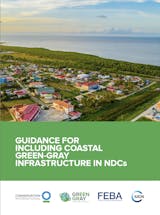
Guidance for Including Green-Gray Infrastructure in NDCs
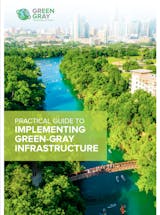
Practical Guide to Implementing Green-Gray Infrastructure

Building the Next Generation of Resilient Infrastructure: Green-Gray Infrastructure
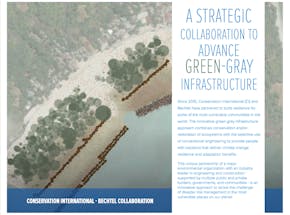
A Strategic Collaboration to Advance Green-Gray Infrastructure
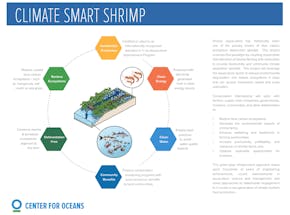
Climate-Smart Shrimp
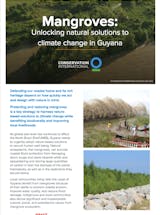
Mangroves: Unlocking Natural Solutions to Climate Change in Guyana
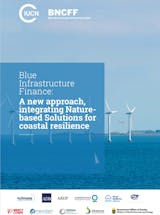
Blue Infrastructure Finance: A new approach, integrating Nature-based Solutions for coastal resilience
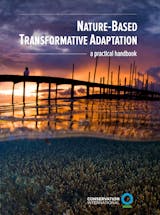
Nature-based transformative adaptation — a practical handbook
From our blog
-
Oceans on the brink: Here are 3 ways to save them
Last year, a major United Nations climate report underscored a grim reality: Humanity is pushing the world’s oceans to the brink. But as grave as the report’s findings were, experts say, there is reason for hope.
© Paul Hilton for Conservation International -
Parched Cape Town’s lesson: Protect nature
Cape Town, South Africa, is running out of water. After experiencing two of the driest seasons on record in 2015 and 2017, the city announced July 9 as “Day Zero” — the day when taps would be shut off.
© grahambedingfield -
Global water crisis: It’s time to turn to nature
Water crises in Cape Town and Southern California have shined a light on the plight of the planet’s fresh water in the face of climate change — and the critical role that nature plays in addressing today’s most pressing water challenges.
© Kyle Obermann -
Want to protect oceans? Start with these 5 things
Oceans leaders gathered this week in Malta for the annual Our Ocean conference, where major commitments about the future of ocean conservation and sustainability were expected from heads of state, ministers, CEOs and others.
© Conservation International/photo by Sterling Zumbrunn -
Pairing nature, technology to fight climate change
Although nature and technology are often pitted as opposites, in truth we don’t have to choose one or the other. In fact, to sustain life on this planet, both are crucial. That’s what makes Conservation International’s new collaboration with the Massachusetts Institute of Technology so exciting.
© CI/Tim Noviello -
In Caribbean, nature is the best climate defense
The Critical Ecosystem Partnership Fund provides grants to civil society organizations in island countries to protect their greatest asset in the fight against climate change: nature. In this interview, CEPF Executive Director Olivier Langrand explains.
© CI/photo by Michele Zador
Contact
For more information, please contact:
Rod Braun
Director, Green-Gray Infrastructure Program
rbraun@conservation.org
This work was generously supported by the French Facility for Global Environment (FFEM).
